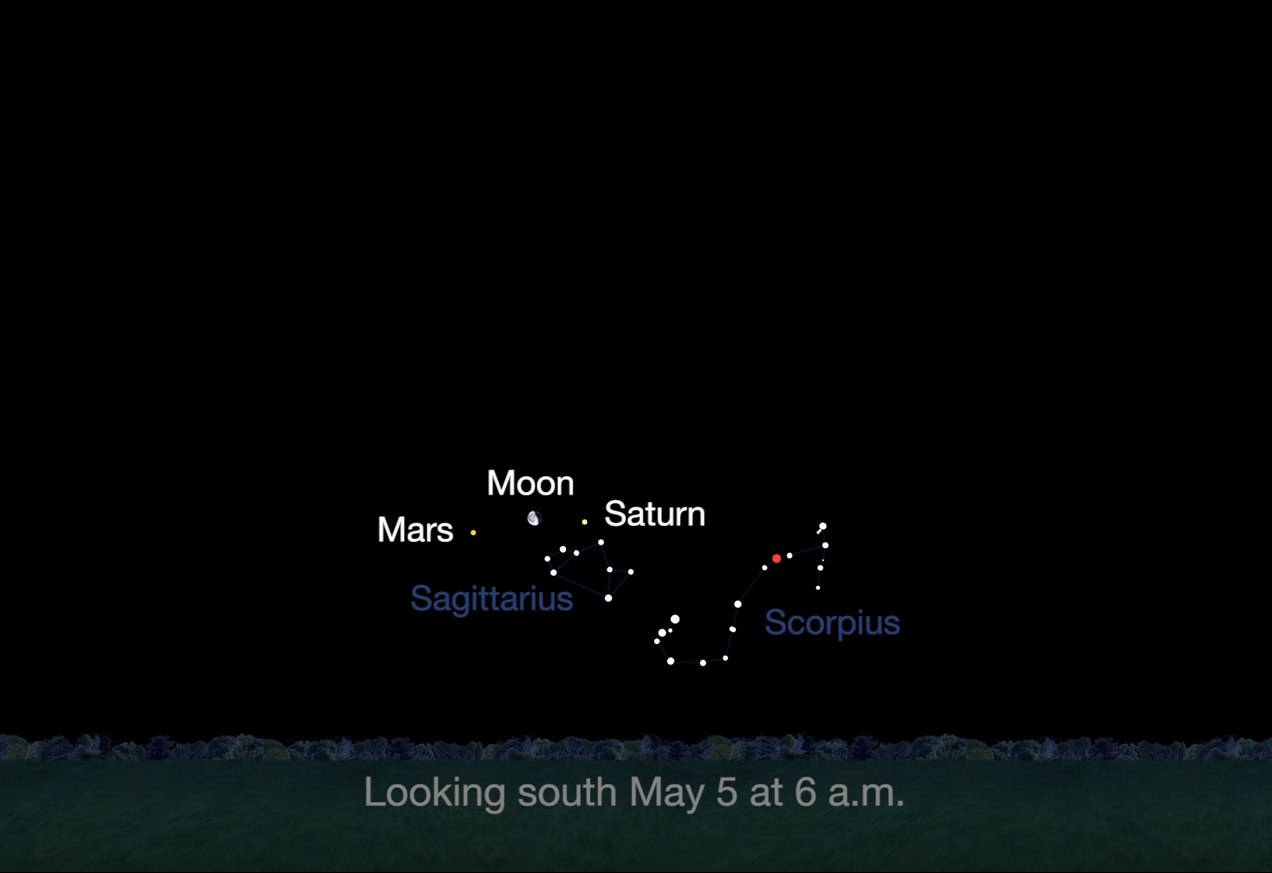How to See Mars with NASA's InSight Lander Launch on Saturday
Mars will shine like a celestial lighthouse in the night sky as NASA launches its next robotic lander to the Red Planet tomorrow (May 5), but only if you know when and where to look.
Mars is the destination for NASA's InSight lander, which is scheduled to launch early Saturday from California's Vandenberg Air Force Base. Liftoff is scheduled for 7:05 a.m. EDT (4:05 a.m. PDT/1105 GMT).
Skygazers in central and southern California, as well as those watching from Mexico's northern Pacific Coast, may be able to see InSight launch toward Mars, weather permitting, NASA officials have said. And depending on your time zone, you may be able to see Mars before or just after the liftoff. [Where to Watch NASA's InSight Mars Lander Launch from California]
To see Mars, look south before dawn on Saturday. The Red Planet will shine to the lower left of the moon at about 6 a.m. in your local time zone (which is after InSight's launch in California, but before the liftoff in Eastern Daylight Time).
If you have a star chart, use it to locate Mars and the moon, which can be found near the constellation Sagittarius, according to this video guide from NASA's Jet Propulsion Laboratory. Saturn will also be visible to the right of the moon, with the constellation Scorpius shining off to the right.
Mars shines brighter this month than it did in April, and according to NASA officials, the Red Planet will become increasingly vivid in the southern morning skies until July 27. On that day, it will reach opposition, when Mars and the sun are on opposite sides of Earth. This causes each to appear in Earth's sky as the other one goes into hiding: When the sun sets in the West, Mars rises in the East, and vice versa. And Mars appears brighter in the night sky because its distance to Earth shortens in the process.
This will be Mars' closest approach to Earth since 2003, according to NASA.
Breaking space news, the latest updates on rocket launches, skywatching events and more!
NASA's InSight Mars lander has a lengthy full name: Interior Exploration using Seismic Investigations, Geodesy and Heat Transport. As that moniker suggests, the mission will probe deep inside Mars to learn about its subsurface activity. [10 Surprising Things About the InSight Mars Lander]
If the trip goes well, InSight will be the first interplanetary mission to take off from the West Coast. NASA has a 2-hour window in which to launch InSight. You can watch the launch live on Space.com.
As of Thursday (May 3), the local weather forecast seems to greenlight the flight this weekend. But viewers should keep in mind that marine fog may obscure viewing, possibly even delaying the launch.
Visit Space.com Saturday for complete coverage of the InSight Mars lander launch.
Follow Doris Elin Salazar on Twitter@salazar_elin. Follow us @Spacedotcom, Facebookand Google+. Original article on Space.com.

Doris is a science journalist and Space.com contributor. She received a B.A. in Sociology and Communications at Fordham University in New York City. Her first work was published in collaboration with London Mining Network, where her love of science writing was born. Her passion for astronomy started as a kid when she helped her sister build a model solar system in the Bronx. She got her first shot at astronomy writing as a Space.com editorial intern and continues to write about all things cosmic for the website. Doris has also written about microscopic plant life for Scientific American’s website and about whale calls for their print magazine. She has also written about ancient humans for Inverse, with stories ranging from how to recreate Pompeii’s cuisine to how to map the Polynesian expansion through genomics. She currently shares her home with two rabbits. Follow her on twitter at @salazar_elin.

